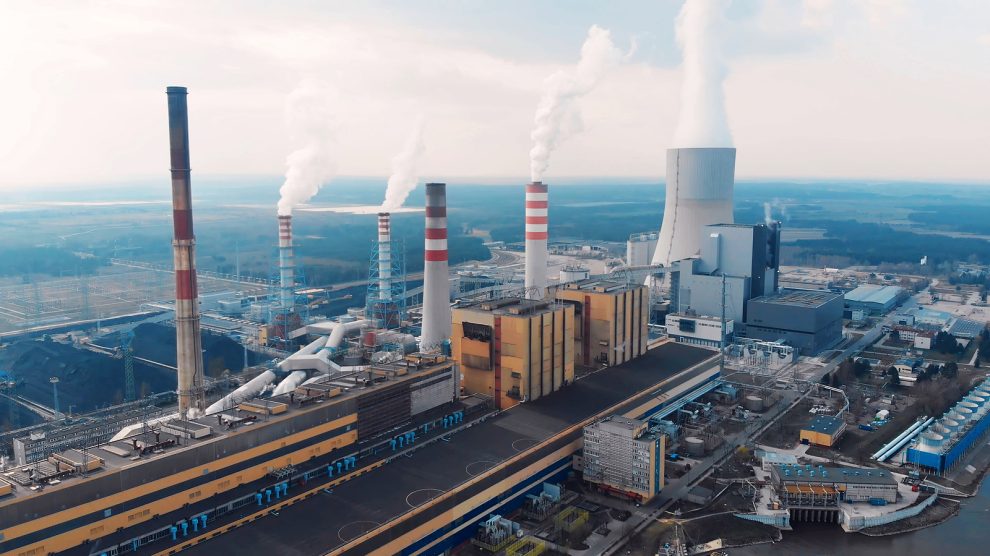By decreasing state control and allowing more private investment, CEE’s energy markets can become more competitive, transparent, and efficient.
Current energy policies fall short of leveraging the full potential of private sector actors—investors, businesses, and consumers—to effectively tackle the problem of climate change in Central and Eastern Europe, according to a major new report from a consortium of seven free-market think tanks from Poland, Bulgaria, Romania, Czechia, Slovakia, Hungary, and Ukraine.
- Governments that are reluctant to embrace climate objectives place the energy transition in jeopardy
- Western Balkans can bypass gas, with solar and wind powering a clean energy transition
- Power with purpose: Sunly’s hybrid parks combining wind, solar and energy storage
The report, Energising the Energy Sector in Central-Eastern Europe, coordinated by the Warsaw Enterprise Institute, highlights that competitive electricity markets decarbonise 66 per cent faster than non-competitive ones.
Despite this, the CEE region has yet to fully harness market potential. Researchers have identified 40 different barriers that hinder competition, increase business costs, and deter private investment, thereby slowing decarbonisation in these countries.
Economic freedom varies across the CEE region. Czechia ranks highest with a relatively liberalised market, fewer barriers to entry, and more transparent regulations.
Yet, even here, significant obstacles remain. For instance, completing a wind farm project takes at least seven years due to bureaucratic delays.
Romania, with moderate barriers, presents a generally favourable investment climate. In stark contrast, Hungary is the least economically free, marked by extensive government control and frequent legislative changes, creating a volatile environment for investors.
Bulgaria faces substantial challenges, including high bureaucracy and regulatory instability, further deterring private investment.
In Poland, the energy market is effectively nationalised, with state-owned companies producing about 70 per cent of the country’s energy, marginalising private investments. The discretionary power wielded by government officials also blocks private investments in new energy capacities, such as Small Modular Reactors (SMRs).
Conversely, Ukraine has made notable progress in reducing bureaucracy, especially following the Russian invasion in 2022. The country has implemented digitised procedures, reduced inspections, and offered tax exemptions for significant investment projects, supporting economic activity and improving clean technologies.
Infrastructure
A common challenge across all CEE countries is infrastructure.
The region accounts for only 13 per cent of the EU’s internal interconnection capacity, despite making up 28.64 per cent of the EU’s population, 15 per cent of its GDP, and 17 per cent of its electricity demand.
Grid modernisation and improved access to land and connections are essential to facilitate the energy transition. The report also takes a critical view of the impact of EU climate policies on competition in CEE energy markets. While the EU promotes market openness and integration, it also allows market-distorting programs such as the Emissions Trading System (ETS) and Carbon Border Adjustment Mechanism (CBAM).
Instead, the report advocates for a ‘Pact for Freedom’ among CEE countries to integrate their economic policies related to the energy market, envisioning Central and Eastern Europe as a unified special economic zone.
This framework would, the report argues, would harmonise regulations and tax solutions, fostering a coherent, interconnected energy ecosystem for over 110 million people, and reducing CO2 emissions.
Other key recommendations from the report include removing barriers to investment by simplifying regulatory frameworks and reducing red tape to attract private investors, and creating financial incentives by developing financial instruments to channel capital into research, development, and modernisation of energy infrastructure.
It also advocates for the phasing out subsidies which would eliminate market distortions and promote fair competition by phasing out subsidies, and a reassessment of EU climate policy to evaluate the effectiveness of ETS and CBAM, and adjust VAT rates to lessen the burden on consumers.
More private capital will lead to lower energy prices
An estimated 100 billion US dollars per year in clean energy research and development is needed to mitigate the adverse effects of climate change, a goal that private capital can help achieve, the report states.
Even under current unfavourable conditions, 77 per cent of companies in the CEE region are investing in business development, with private capital accounting for nearly 70 per cent of investment in renewables.
This trend highlights the potential for market-oriented policies to attract more private capital, leading to lower energy prices and alleviating energy poverty, a significant issue in the region.
“By decreasing state control and allowing more private investment, markets can become more competitive, transparent, and efficient,” the report concludes. “This can lead to improved infrastructure, innovation, and, ultimately, a more resilient energy sector.”
Unlike many news and information platforms, Emerging Europe is free to read, and always will be. There is no paywall here. We are independent, not affiliated with nor representing any political party or business organisation. We want the very best for emerging Europe, nothing more, nothing less. Your support will help us continue to spread the word about this amazing region.
You can contribute here. Thank you.


